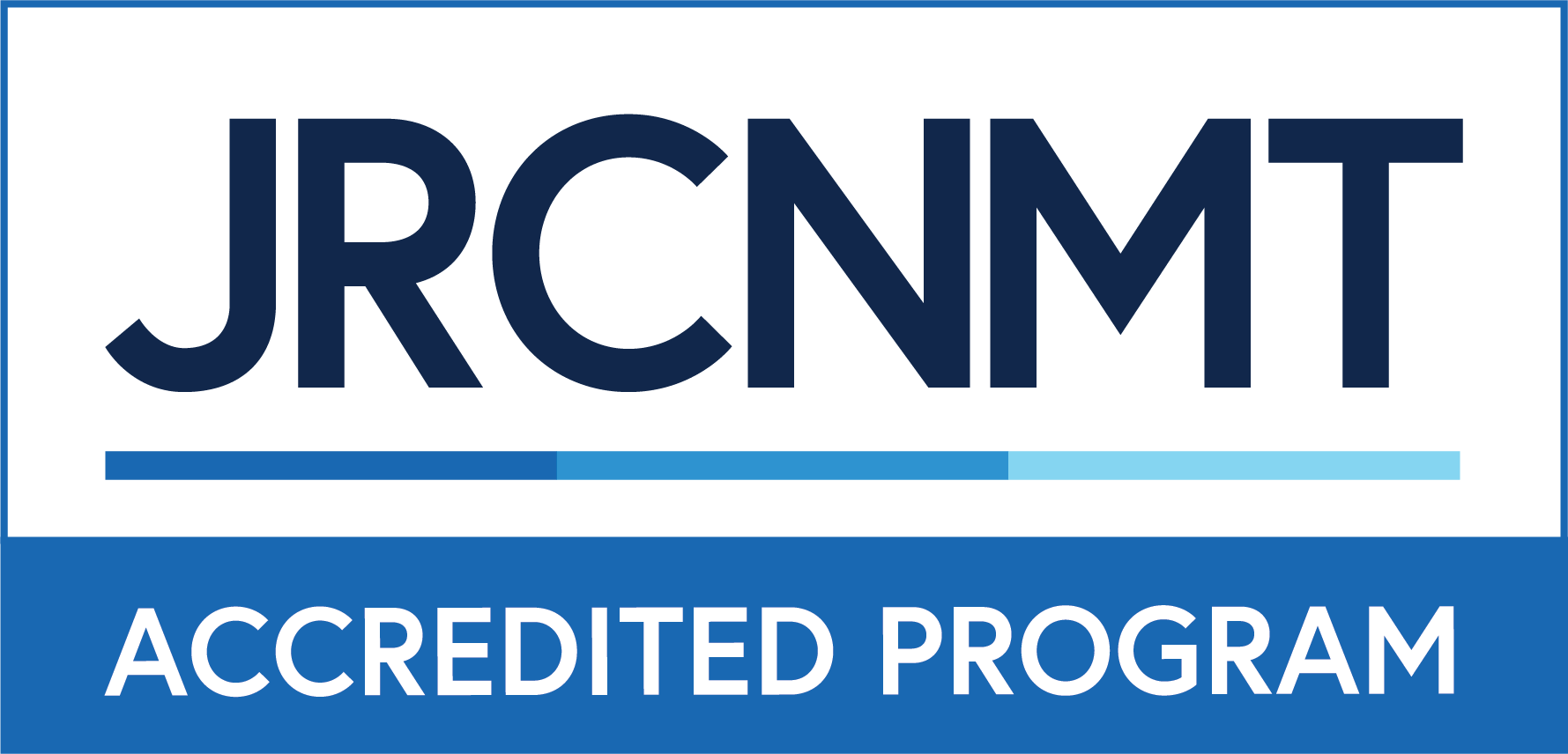Graduate achievement data is an indicator of program effectiveness, demonstrating the extent to which a program achieves its goals. The current report on graduate achievement data, identified by program, is available on the JRCNMT Website by clicking on the following link:
https://www.jrcnmt.org/students/graduate-achievement-data/

Certification Results
There are two national certification exams for nuclear medicine technologists. One is offered by The American Registry of Radiologic Technologists (ARRT). The other national certification exam is offered by the Nuclear Medicine Technology Certification Board.
Upon successful completion of the NMI program and comprehensive final examination, all students are eligible to apply to the NMTCB or ARRT to take the national certification/registry exam in nuclear medicine technology. ARRT candidates must have earned an associate (or more advanced) degree from an accrediting agency recognized by ARRT.
JRCNMT Graduate Outcomes DataGraduate outcomes are indicators of program effectiveness, demonstrating the extent to which a program achieves its goals. Programmatic graduate outcomes data reported on the JRCNMT website include: five-year time period of current report; graduation rate; ARRT credentialing success; NMTCB credentialing success and job placement rate.
Graduate Outcomes Report